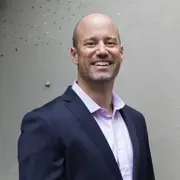Read more
HSO in Education
Unlocking potential: Facilities Management at Lincoln University
With the support of Aware Group and Aware AI for Facilities Utilisation, Lincoln University has been able to automate people counting, optimise their facilities, and make fact-based decisions to reduce operating costs.

Tertiary institutions all across the world struggle with providing accurate, timely data regarding the utilisation of their campuses and facilities. Because this data is vital to running campuses as efficiently as possible, Lincoln University enlisted Aware Group (an HSO company) help to automate how they collect and report information in order to optimise space usage. With the support of Aware Group and Aware AI for Facilities Utilisation, Lincoln University has been able to automate people counting, optimise their facilities, and make fact-based decisions to reduce operating costs.
Across New Zealand’s tertiary education sector, enormous change is underway. Not only is a new vocational training delivery model being developed, Covid-19 has accelerated the adoption of new technologies to assist with learning. At the same time, it has also underscored the importance of physical learning spaces that build connections and a sense of community. In the modern era, tertiary campuses are increasingly becoming thriving social hubs that fulfil a host of needs for students beyond class time, and invite the wider community to engage with the institution in shared spaces.
To understand the magnitude of this change, outline exactly how facilities are being used and enable the right resources to be put in place, it’s important to have reliable data. Universities report regularly on their usage of facilities to the Tertiary Education Facilities Management Association (TEFMA), which means organisations in the sector can benefit from each other’s learnings and ensure their facilities are being used as effectively as possible. Until 2020, this reporting required a member of staff to walk around different rooms on campus, manually count how many people were there, and report back.
Not only was this time-consuming and expensive, it didn’t account for regular (and sometimes dramatic) fluctuations through the semester or year. Staff might report anecdotally about attendance dropping in week 5 of the semester, or when it was raining, for example, but there was no reliable way for that to be proven. As it planned for a programme of new building work and modernisation, Lincoln University was looking for a way to create a more accurate picture of how its spaces were being used, so it could ensure it was delivering exactly what its education community needed.
So the University approached Aware Group to build a modern system that would optimise spending, reduce the manual work involved in counting heads and allow for more informed decisions that would make the experience of being at Lincoln even better for staff and students alike.
“We were doing enough to cover our compliance needs. But the data had little use beyond that. It was very difficult to predict room occupancy and build timetables in an efficient way.”

Make every room count
The solution that we designed for Lincoln University to keep track of room occupancy in real time puts cameras in teaching spaces, which take snapshots of the room every five minutes. The product’s People Counting module counts heads using a custom machine learning system, which can even track how people move through a space to show where they’re spending most time. Privacy was of utmost importance. Not only were students informed of the changes, Aware Group understood the need to protect their privacy at all times and ensure data could not be used for any purpose other than tracking headcounts.
Aware and Lincoln took a number of steps to ensure this. The cameras themselves are hardwired into the network, and are secured with the same safeguards as Lincoln’s existing CCTV network. The images only sit in the Azure environment for a few days before they’re deleted, and any access to the small archive is heavily audited to make sure that the images are only ever used for checking accuracy or re-training the model for edge cases. The solution was trialed in three lecture rooms as a proof of concept in 2019, and has since been rolled out to 30 rooms at Lincoln’s Te Waihora campus. Tests showed that its accuracy is on par with manual counting – but counts happen 24,000 times more often.
“Our people counting solution is an improvement on a manual process in nearly every way,” says Jeff Brown, Data Architect at Aware Group. “It’s less expensive, much more frequent, and just as accurate.”
The picture Lincoln University gets of its campus is now incredibly detailed. Not only has it taken all the time-consuming manual work out of its TEFMA requirements, Lincoln’s team can view all the aggregated data from the cameras in near-real time. A dashboard built in Power BI shows the occupancy of each room as well as trends over time.
The Future of facilities management
Having the system in place has allowed Lincoln to start thinking bigger about the possibilities of data. The University is now working with Aware Group to develop a reporting system that allows them to make the most of their new wealth of information. The next step is to integrate the data with the timetabling system. Previously, decisions on room allocation were made based on educated assumptions, but once the data from the headcounting solution is integrated with the timetabling system, Lincoln’s team will have much more confidence that they are scheduling classes in the right place, at the right time.
“Universities are being dramatically changed by new technologies,” says Dimitri Mardas, Higher Education Industry Executive at Microsoft New Zealand. “We’re excited to see the capabilities of Azure being put to use modernising and transforming Lincoln’s timetabling and facilities management systems. It’s a blueprint for all tertiary organisations in Aotearoa New Zealand, with the potential not only to make the allocation of resources much more efficient, but enable much better planning and better experiences for everyone on campus.”
The information will also prove useful for health and safety purposes. While the data is completely anonymised, knowing how many people are in each room has obvious benefits should an emergency arise – something many local residents will appreciate, following the region’s devastating earthquakes a decade ago. Lincoln’s new wealth of data will also inform its 10-year facilities refresh plan, which commenced in 2019. Having strong data will allow any new or revamped facilities to provide students with the best possible experience, avoiding over- or underfilled rooms.
“We have a hunch that we’re short on rooms that cater for 50-70 people, for example,” says Fiona Taylor, “but until now we’ve never been able to prove it definitively. This data means we’ll know for sure.”
Now, any new facilities will reflect the ways the current campus is really being used. Instead of guessing what students want, Lincoln can build rooms that work for how their students actually interact with their spaces. Head counts may seem like something small, but they’re exactly the kind of thing that can make a big difference when all the data is added together. Not only does education happen in the classroom – these days, the classroom can share some valuable lessons of its own.
“Universities are being dramatically changed by new technologies. We’re excited to see the capabilities of Azure being put to use modernising and transforming Lincoln’s timetabling and facilities management systems.”

Read more
HSO in Education
We, and third parties, use cookies on our website. We use cookies to keep statistics, to save your preferences, but also for marketing purposes (for example, tailoring advertisements). By clicking on 'Settings' you can read more about our cookies and adjust your preferences. By clicking 'Accept all', you agree to the use of all cookies as described in our privacy and cookie policy.
Purpose
This cookie is used to store your preferences regarding cookies. The history is stored in your local storage.
Cookies
Location of Processing
European Union
Technologies Used
Cookies
Expiration date
1 year
Why required?
Required web technologies and cookies make our website technically accessible to and usable for you. This applies to essential base functionalities such as navigation on the website, correct display in your internet browser or requesting your consent. Without these web technologies and cookies our website does not work.
Purpose
These cookies are stored to keep you logged into the website.
Cookies
Location of Processing
European Union
Technologies Used
Cookies
Expiration date
1 year
Why required?
Required web technologies and cookies make our website technically accessible to and usable for you. This applies to essential base functionalities such as navigation on the website, correct display in your internet browser or requesting your consent. Without these web technologies and cookies our website does not work.
Purpose
This cookie is used to submit forms to us in a safe way.
Cookies
Location of Processing
European Union
Technologies Used
Cookies
Expiration date
1 year
Why required?
Required web technologies and cookies make our website technically accessible to and usable for you. This applies to essential base functionalities such as navigation on the website, correct display in your internet browser or requesting your consent. Without these web technologies and cookies our website does not work.
Purpose
This service provided by Google is used to load specific tags (or trackers) based on your preferences and location.
Why required?
This web technology enables us to insert tags based on your preferences. It is required but adheres to your settings and will not load any tags if you do not consent to them.
Purpose
This cookie is used to store your preferences regarding language.
Cookies
Why required?
We use your browser language to determine which language to show on our website. When you change the default language, this cookie makes sure your language preference is persistent.
Purpose
This service is used to track anonymized analytics on the HSO.com application. We find it very important that your privacy is protected. Therefore, we collect and store this data anonymously on our own servers. This cookie helps us collect data from HSO.com so that we can improve the website. Examples of this are: it allows us to track engagement by page, measuring various events like scroll-depth, time on page and clicks.
Cookie
Purpose
With your consent, this website will load Google Analytics to track behavior across the site.
Cookies
Purpose
With your consent, this website will load the Google Advertising tag which enables HSO to report user activity from HSO.com to Google. This enables HSO to track conversions and create remarketing lists based on user activity on HSO.com.
Possible cookies
Please refer to the below page for an updated view of all possible cookies that the Google Ads tag may set.
Cookie information for Google's ad products (safety.google)
Technologies Used
Cookies
Purpose
With your consent, we use IPGeoLocation to retrieve a country code based on your IP address. We use this service to be able to trigger the right web technologies for the right people.
Purpose
With your consent, we use Leadfeeder to identify companies by their IP-addresses. Leadfeeder automatically filters out all users visiting from residential IP addresses and ISPs. All visit data is aggregated on the company level.
Cookies
Purpose
With your consent, this website will load the LinkedIn Insights tag which enables us to see analytical data on website performance, allows us to build audiences, and use retargeting as an advertising technique. Learn more about LinkedIn cookies here.
Cookies
Purpose
With your consent, this website will load the Microsoft Advertising Universal Event Tracking tag which enables HSO to report user activity from HSO.com to Microsoft Advertising. HSO can then create conversion goals to specify which subset of user actions on the website qualify to be counted as conversions. Similarly, HSO can create remarketing lists based on user activity on HSO.com and Microsoft Advertising matches the list definitions with UET logged user activity to put users into those lists.
Cookies
Technologies Used
Cookies
Purpose
With your consent, this website will load the Microsoft Dynamics 365 Marketing tag which enables HSO to score leads based on your level of interaction with the website. The cookie contains no personal information, but does uniquely identify a specific browser on a specific machine. Learn more about Microsoft Dynamics 365 Marketing cookies here.
Cookies
Technologies Used
Cookies
Purpose
With your consent, we use Spotler to measures more extensive recurring website visits based on IP address and draw up a profile of a visitor.
Cookies
Purpose
With your consent, this website will show videos embedded from Vimeo.
Technologies Used
Cookies
Purpose
With your consent, this website will show videos embedded from Youtube.
Cookies
Technologies Used
Cookies
Purpose
With your consent, this website will load the Meta-pixel tag which enables us to see analytical data on website performance, allows us to build audiences, and use retargeting as an advertising technique through platforms owned by Meta, like Facebook and Instagram. Learn more about Facebook cookies here. You can adjust how ads work for you on Facebook here.
Cookies
Purpose
With your consent, we use LeadInfo to identify companies by their IP-addresses. LeadInfo automatically filters out all users visiting from residential IP addresses and ISPs. These cookies are not shared with third parties under any circumstances.
Cookies
Purpose
With your consent, we use TechTarget to identify companies by their IP address(es).
Cookies
Purpose
With your consent, we use this service provided by uMarketingSuite to run A/B tests across the HSO.com application. A/B testing (also called split testing) is comparing two versions of a web page to learn how we can improve your experience.
Purpose
With your consent, we use this service provided by uMarketingSuite to personalize pages and content across the HSO.com application. Personalization helps us to tailor the website to your specific needs, aiming to improve your experience on HSO.com.
Purpose
With your consent, we use ZoomInfo to identify companies by their IP addresses. The data collected helps us understand which companies are visiting our website, enabling us to target sales and marketing efforts more effectively.
Cookies